Back to the wild: how 'ungardening' took root in America

Retired union organizer Anna Burger lives by a busy road just a minute's walk from a metro station in the US capital Washington, but every morning she wakes up to a birdsong symphony.
Butterflies, squirrels and even the occasional deer also come to visit the tree-covered property that she has cultivated with a focus on native species that provide nesting space and nourishment for the local wildlife.
Well-manicured grass lawns have long been associated with the American Dream, but a growing "rewilding" movement now seeks to reclaim yard space for nature.
"We knew that putting chemicals on grass to try to keep it green seemed to be a futile process that wasn't good for kids playing or for the environment," Burger told AFP.
She and her husband bought the house in 1990 and "we've tried to make it friendly, making sure that we have water sources, making sure that there are food sources so these trees aren't the most colorful but have great berries."
The couple's home is surrounded by several houses whose occupants take a more traditional approach toward their green space, but a stroll through the leafy Takoma Park neighborhood reveals many more where "ungardening" has taken root.
Precise definitions of what this means vary, but the concept of meddling less and celebrating nature more was notably popularized in 1993 book "Noah's Garden" by Sara Stein, a Bible for the movement.
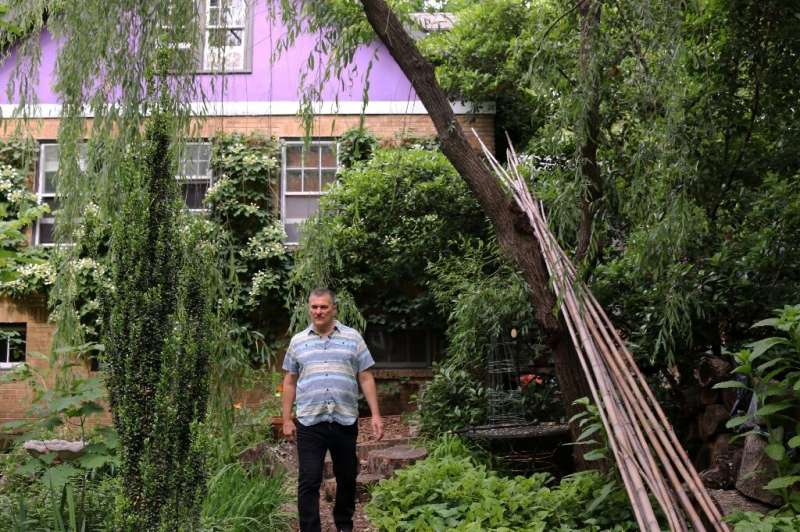
'My energy space'
A few blocks away from Burger's house, Jim Nichols, a nurse consultant and massage therapist, shows off the "Certified Wildlife Habitat" sign he acquired from a local non-profit group after meeting requirements like feeding, nesting space and water supply.
Nichols also eschews the use of pesticides in his yard, explaining: "We have a lot of insects and I try to work with the insects," adding that he is particularly proud of the honey bees that come to water.
"It's my energy space. It's where I get energy and feed off the energy from my garden," he added.
Irving and Gail, retired public school teachers in their seventies from the same neighborhood, have a yard space filled with forest-like undergrowth and dozens of trees, attracting cardinals, blue jays and robins, but also plenty of mosquitoes.
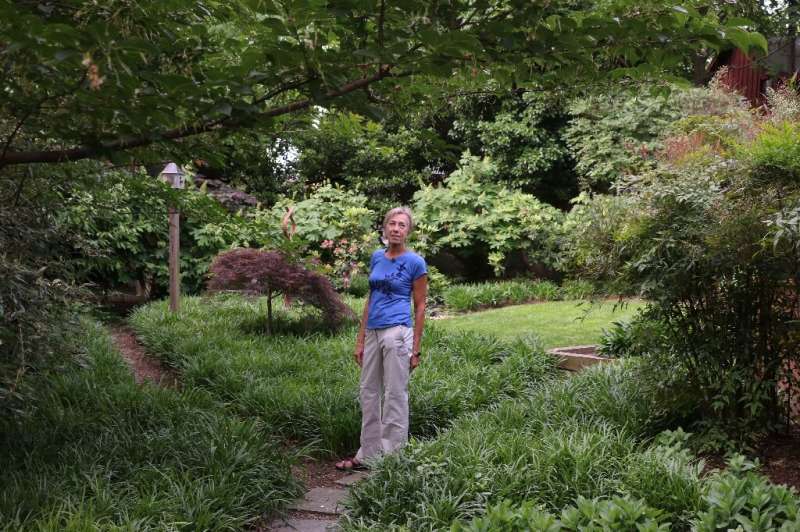
"People will come up and either love it or they think it's out of control," laughed Gail, declining to give her last name.
That tension speaks to the conflicting views that have emerged about rewilding efforts, said Chris Swan, an ecologist at the University of Maryland Baltimore County.
On the one hand is an opposition to "this American tradition of mowing a garden and having a lawn," in favor of letting nature take its course which in turn increases biodiversity of plants and animals, he said.
But people think that often "looks messy, it looks unkempt."
"I don't think people mind having something that looks like... a wild place or prairie, or a meadow but they don't like to see too tall. Anything over three feet (one meter) starts to make people uncomfortable," said Swan.
-
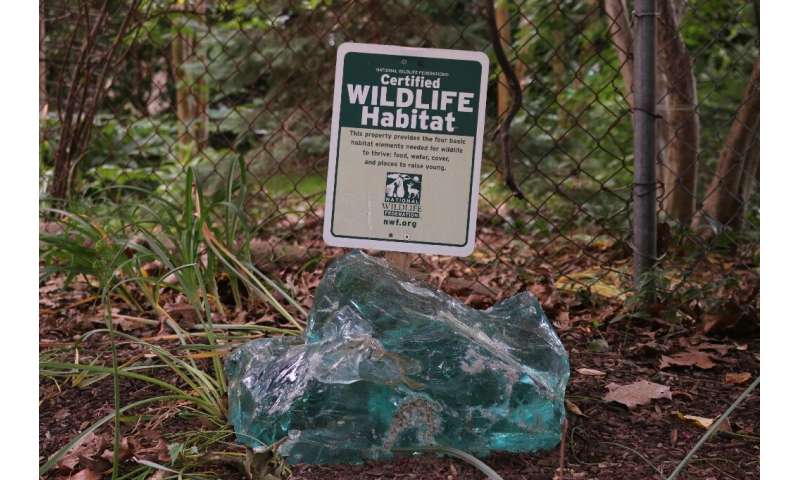
Jim Nichols' rewilded garden shows off the "Certified Wildlife Habitat" sign he earned from a local non-profit group -
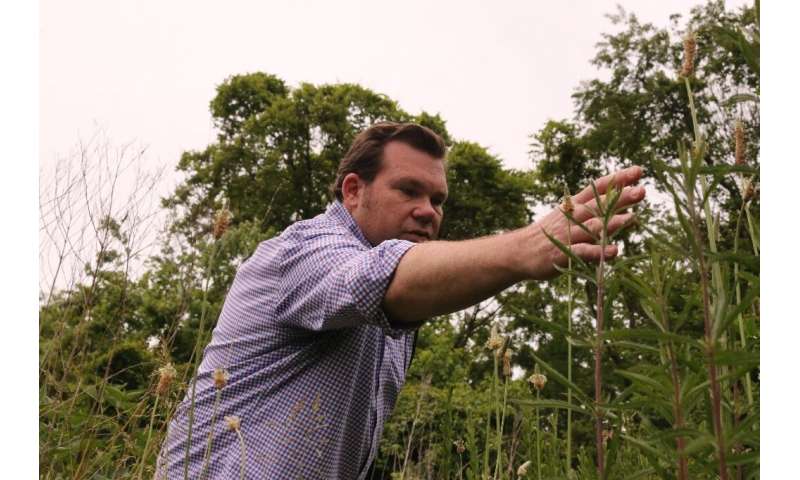
Ecologist Christopher Swan, who argues that rewilding efforts can be even more transformative in inner cities, tends to native plants on the University of Maryland campus in Baltimore, Maryland -
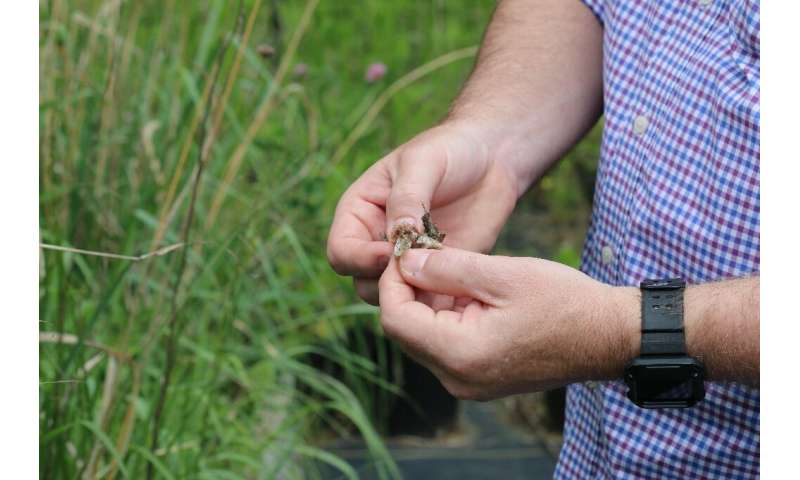
Ecologist Christopher Swan, opening a spider's nest at his garden on the University of Maryland campus in Baltimore, Maryland, says people don't seem to mind something that looks like a meadow, but they don't want it "too tall"
Rewilding inner cities
Looking beyond relatively affluent suburbs, Swan argues that rewilding efforts can be even more transformative in the inner cities.
From 2014-18, he oversaw an ambitious experiment in the city of Baltimore, about 30 miles (48 kilometers) northeast of Washington, where decades of population decline have left around 17,000 vacant buildings and 14,000 vacant lots.
Most of these lots had very poor quality soil and were overcome with debris, but Swan and his colleagues showed they could turn eyesores into urban meadows by planting native species like purple coneflowers and black-eyed Susans that prospered beyond their expectations.
Though the project eventually ended, Swan says he remains excited by its potential, and not just in Baltimore. About 15 percent of the land in US cities is deemed vacant, an area roughly the size of Switzerland, according to the US Department of Agriculture Forest Service.
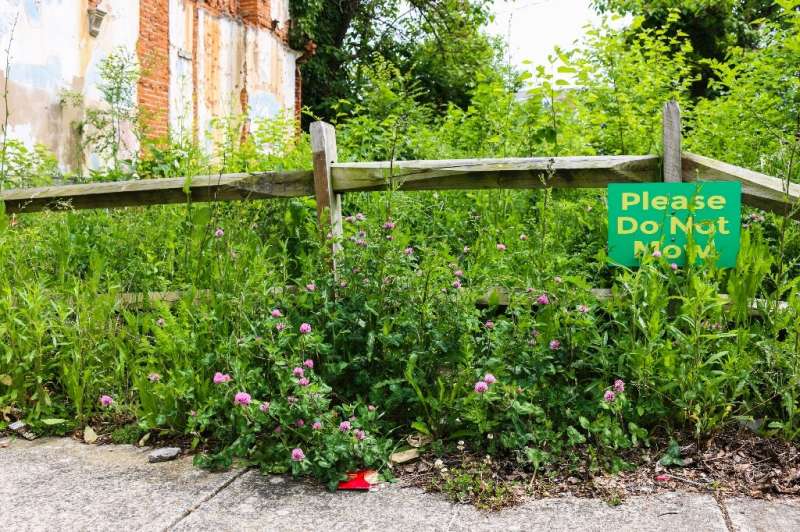
"The quality of the habitat changes, it attracts wildlife, the birds go crazy. And in the spring, we see an increase in pollinators," Swan says of the urban meadow project.
Another species that prospers: human beings.
A study in the Proceedings of the National Academy of Sciences last year found an almost 30 percent drop in gun violence around re-greened vacant lots in the city of Philadelphia.
Another 2018 paper in The Journal of the American Medical Association, that also looked at Philadelphia, found self-reported poor mental health dropped by more than 60 percent compared to a control group.
"And so being near those spaces actually contributes to community well being," concluded Swan.
Journal information: Proceedings of the National Academy of Sciences , Journal of the American Medical Association
© 2019 AFP



















